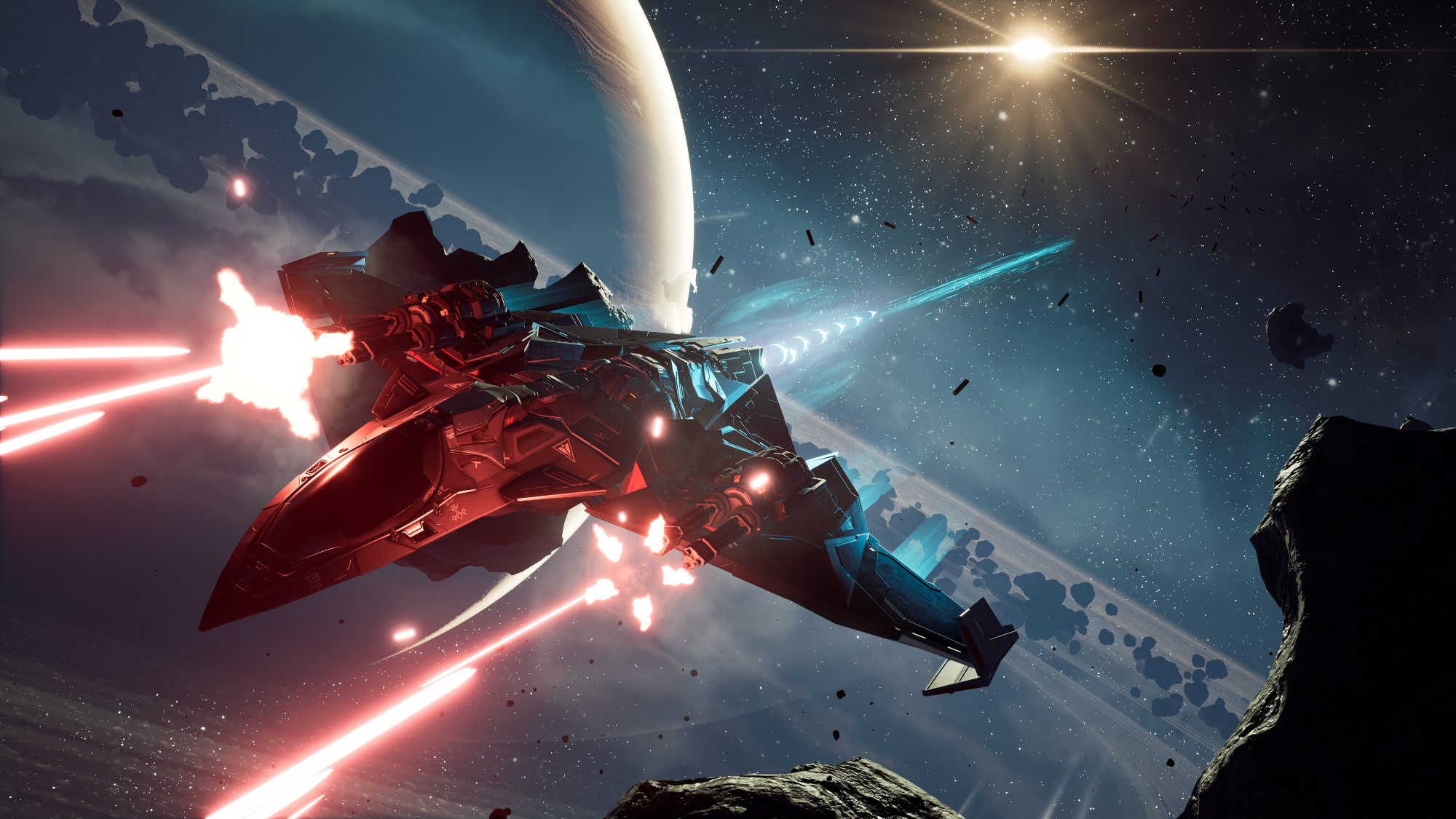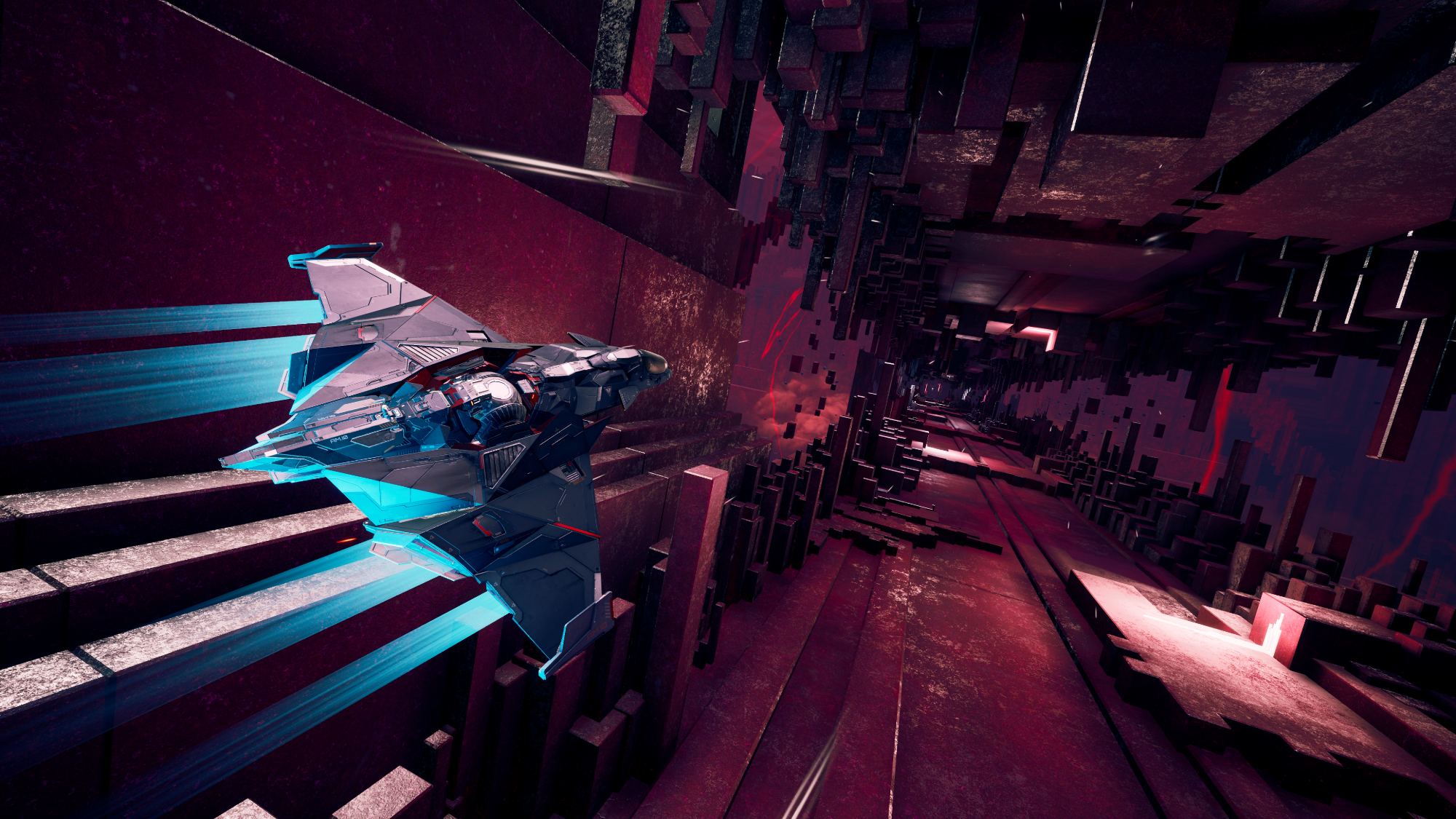Tom's Guide Verdict
Chorus’ ambitious and frenetic space combat makes for some satisfying dogfights, but its convoluted story doesn't stick the landing.
Pros
- +
Excellent space combat
- +
Good graphics
- +
Strong sound design
Cons
- -
Needlessly dense narrative
- -
Boring side missions
Why you can trust Tom's Guide
Platforms: PC (reviewed), PS5, PS4, Xbox Series X/S, Xbox One, Google Stadia, Amazon Luna
Price: $40
Release date: December 3, 2021
Genre: Third-person space-combat shooter
In Chorus, when an important character died in what was supposed to be a sentimental moment, I couldn’t help but feel indifferent. That’s because Chorus’ storytelling happens through intercom chat, all audio with only a static ID photo of the speaker to accompany it. Never once do you interact with any other character face-to-face. It all feels impersonal.
Chorus is a space combat game from German developer Deep Silver Fishlabs. It’s a mid-budget $40 title that excels in excellent interstellar dogfights, but an overly ambitious story hampers the experience. Even then, the 12-hour campaign is worthwhile for its frenetic battles which, in the heat of flurried lasers and ricocheting rockets, can elevate players to combat nirvana.
On the other hand, Chorus’ dense story tries to weave together themes of spirituality, religion, extremism, mysticism and redemption, all through audio prompts. The narrative feels ambitious, even if the execution can seem amateurish at times. And it’s ultimately hard to fall in love with its characters or story when the relationships feel artificial. Read on for our full Chorus review.
Chorus review: Campaign
Chorus is not a full-budget $70 title, and players should keep their expectations in check. There won’t be elaborate Last of Us-style cutscenes, or enormous Assassin’s Creed-like open worlds. Instead, players will explore a largely bland universe, with floating asteroids and generic-looking ships that load in and out of uninspired space colonies.

In Chorus, players take control of Nara, a prophet-like figure to The Cult. This group of fanatics believes in cleansing humanity, i.e., committing mass genocide. After Nara commits an act that burdens her with immeasurable guilt, she defects and is presumed dead.
Nara herself is contemplative and quiet. She’ll often whisper to herself, giving inner soliloquies on just about every topic. There’s an edge to Nara, but one that feels more grating than cool. She often comes off as emotionless, likely due to her training as an elite pilot and figure within The Cult. And, of course, her ability to commit wanton acts of violence requires a divorce from her emotions.
Nara is neither a particularly likeable nor relatable character. But, for the purposes of Chorus' narrative, she suffices. Joining her is a sentient spaceship called Forsaken, whose name Nara shortens to Forsa. He’s also deeply contemplative, with an ominous backstory and feelings of bitterness toward both Nara and The Cult.
Get instant access to breaking news, the hottest reviews, great deals and helpful tips.
On the surface, the story in Chorus screams "young adult novel." It’s a relatively basic premise: An evil organization tries to enact its vision across the galaxy. It’s up to a team of unified humans, along with an especially gifted defector, to fight back. The sheer evilness of The Cult undercuts any complexity in the story. Not only are they unwavering in their vision; they’re also brutal in their methods. There’s seldom any subtlety, which makes the story arc relatively easy to follow. This kind of moral certainty makes for good young adult fiction, but nothing much beyond that.
For actual adults, the story can come off as insufferable. But then again, given that narrative is mostly audio, it’s just as easy to flip open Twitter and ignore it altogether.
Chorus review: Gameplay
Chorus shines in its gameplay. The game largely consists of space combat, which involves a lot of accelerating through asteroid fields and shooting at enemies. Space combat games can often be difficult to manage, as enemies can come from all axes, which makes constant maneuvering into a headache-inducing, finger-twisting process. But Fishlabs has programmed a fantastic strafing system into Chorus, one that helps players feel that they have complete control in the vacuum of space.

For example, when you accelerate toward an enemy, as they fly past you in an astronautical game of chicken, you can press the strafe button. When you do so, your acceleration will stop, but momentum will carry Forsa forward. In this floating state, players can orient their ship in any direction quickly, pointing their lasers right at an enemy and blasting bad guys away. It’s an empowering feeling for players who are willing to master the game’s physics.
It’s in these moments, as I was threading between ships or strafing underneath an enemy destroyer, blowing up their critical components in the process, I felt like I was one with the game. It’s the same sort of trance that happens when you play a fighting game for a long time, and the moves become second nature.

Actually, Nara has her own version of the special moves from fighting games. These moves are called rites, and include zapping an enemy with electricity, or instantly teleporting behind them. While these might seem cheap at first, these attributes become essential to combat when you're trying to break shields or get behind a quick enemy.
Boss fights are where the game can become especially challenging. These infrequent challenges ramp up the difficulty significantly.
During difficult missions or tough bosses, the game provides generous checkpoints, at least. These put me back in the action as quickly as possible. Some of the difficulty spikes were abrupt, though, and I found myself spending far too much time repeating the same few sequences. Eventually I got through them, but not without seriously contemplating throwing my controller at the television.
Players can also earn credits from completing missions, or from finding random crates, to upgrade Forsa. But the weapon upgrade system feels barebones, and you don't need to do that much with it to complete the game. While I purchased some light upgrades, I feel decently confident that a patient, skilled player could complete the game with basic equipment.
Chorus also doesn't offer many reasons to venture off the main path. Whenever I jaunted off to help a random space-goer, the narrative conclusions were seldom worth it. Often, missions would involve fighting off a bunch of Cult enemies and collecting a reward at the end. Upon finishing the main campaign, I felt little reason to go back and complete random side stories.
Chorus review: Presentation
Chorus can look eerily bland, wonderfully imaginative or sometimes, especially in boss fights, like a headache-inducing cacophony for the senses.
On the bland end, Chorus portrays the vast emptiness of space, with only a few brown specks of asteroids to break up the monotony. However, about halfway into the game, new areas open up with tremendously interesting art direction: wild hues with imaginative flourishes along the horizon.

The graphics in Chorus are good overall. The game lacks tay tracing support at present, but Fishlabs has confirmed that it would add the advanced lighting tech in a future update. Even so, the gleam of stars on the smooth metal surface of ships still shows a strong attention to artistic detail.
There are some unique artistic choices throughout the game, however. From the way Forsa’s parts move when strafing, to the shrines Nara explores, there’s a deliberate visual theme that ties the whole package together. In the deep blackness of space, the Cult often sticks to red. The temples that Nara visits have cubical stalactites that grow in a crystal lattice formation.

While I wouldn’t define the game as graphically intensive, there were times when Chorus would stutter tremendously in the heat of combat. In two instances, the game’s framerate seemed to drop well below 20 frames per second. It’s surprising, considering that I played this game on a PC rocking an Nvidia GeForce RTX 3080 Ti. Apart from those instances, the game maintained a rock-solid frame rate throughout.
Boss fights, while infrequent, were a dizzying mess of colors and effects. With so much happening at once, it was difficult to follow the main objective when flying objects from every direction took up so much of the screen
Fishlabs deserves some credit for its excellent sound design. Playing on a 5.1.2 surround sound setup, hearing ships blaze by from every direction created an incredible feeling of immersion.
Chorus review: Verdict

Edgy dialogue, story issues and uninteresting characters aside, Chorus is a great game with strong space combat propping it up. It’s kind of a one-trick pony, but that’s OK. Chorus is like playing through the story mode in a fighting game. The dialogue and cutscenes all serve the explicit purpose of getting into the next fight.
Chorus’ story had potential, but the developers tried to pack in a big-budget tale into a mid-budget project. The developers had to compromise somewhere.
I do worry that Chorus might not stand out among the rest of the late 2021 game releases. That would be a shame, as the game does offer something special.
I, for one, am glad that publisher Deep Silver took a chance on Chorus. Its inventiveness, especially in space combat, shows that creativity does still exist in mid-budget games. Although, next time, it would be nice to see some facial expressions.

Imad is currently Senior Google and Internet Culture reporter for CNET, but until recently was News Editor at Tom's Guide. Hailing from Texas, Imad started his journalism career in 2013 and has amassed bylines with the New York Times, the Washington Post, ESPN, Wired and Men's Health Magazine, among others. Outside of work, you can find him sitting blankly in front of a Word document trying desperately to write the first pages of a new book.

